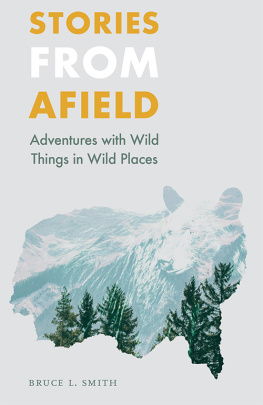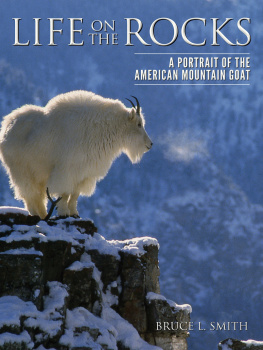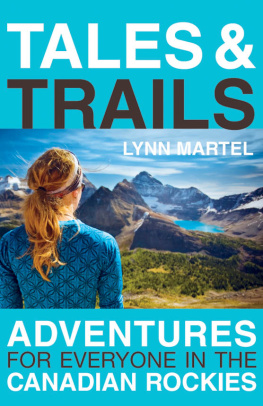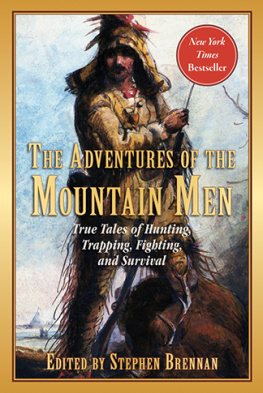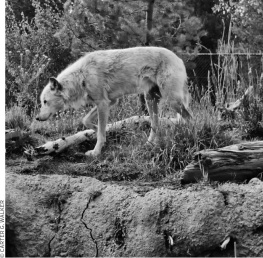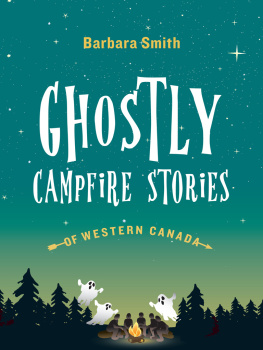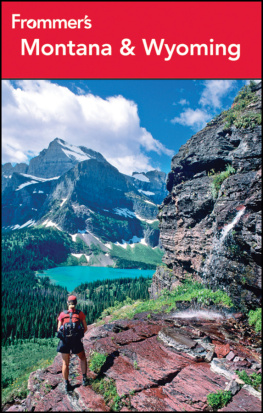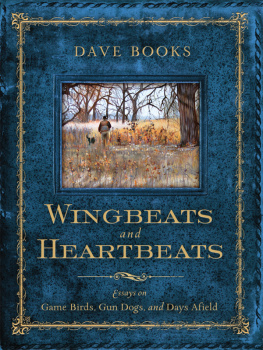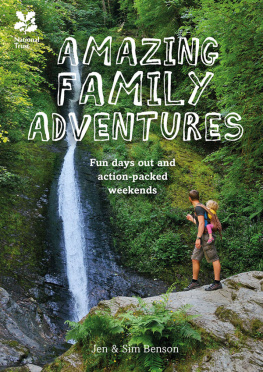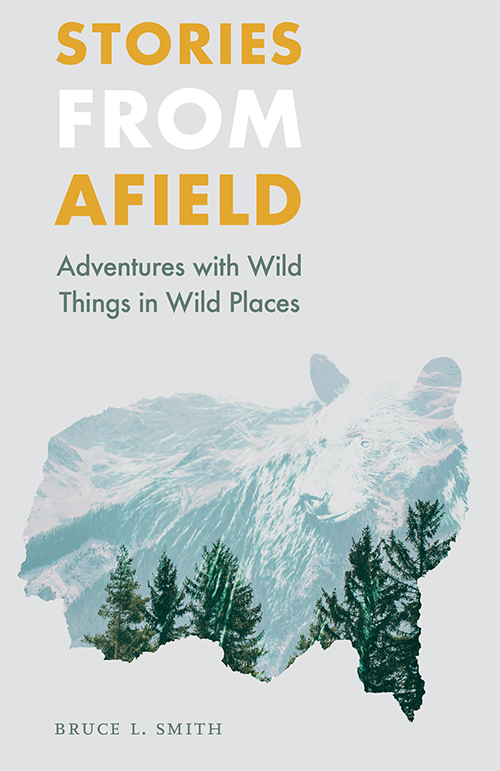
Plenty of wildness remains on this civilized and domesticated continent, and Bruce Smith has seen more than his share. These are stories to be read by the fire at the close of a winter day.
Bill McKibben, Schumann Distinguished Scholar at Middlebury College and author of Long Distance
Stories from Afield is a stirring, informative, and at times gripping tale of biologist Bruce Smiths love affair with the fauna of the Rocky Mountains as well as an impassioned reminder for all of us to become more proactive in protecting the Earths natural landscapes.
Ted Kerasote, author of Merles Door and Bloodties
Bruce Smith is a great storyteller. Here he once again demonstrates the powerful insights he commands as a wildlife biologist and his skill as an outdoor writer. This is a book of sweet, deeply personal tales. Savor them.
Todd Wilkinson, environmental journalist and author of Grizzlies of Pilgrim Creek

Outdoor Lives Series
Stories From Afield
Adventures with Wild Things in Wild Places
Bruce L. Smith
University of Nebraska Press | Lincoln & London
2016 by Bruce L. Smith
Cover designed by University of Nebraska Press; cover images istockphoto.com/Toddsm66 (bear) and Stocksy/Soren Egeberg (forest)
Author photo courtesy of the author
Acknowledgments for the use of previously published material appear in , which constitutes an extension of the copyright page.
All rights reserved
Library of Congress Cataloging-in-Publication Data
Names: Smith, Bruce L., 1948 , author.
Title: Stories from afield: adventures with wild things in wild places / Bruce L. Smith.
Description: Lincoln: University of Nebraska Press, 2016. | Series: Outdoor lives series.
Identifiers: LCCN 2016010714 (print)
LCCN 2016029455 (ebook)
ISBN 9780803288164 (pbk.: alk. paper)
ISBN 9780803295339 (epub)
ISBN 9780803295346 (mobi)
ISBN 9780803295353 ( pdf)
Subjects: LCSH : Wildlife conservationUnited StatesFieldworkAnecdotes. | Outdoor lifeUnited StatesAnecdotes. | Smith, Bruce L., 1948
Classification: LCC QL 84.2 . S 65 2016 (print) | LCC QL 84.2 (ebook) | DDC 333.95/40973dc23
LC record available at https://lccn.loc.gov/2016010714
The publisher does not have any control over and does not assume any responsibility for author or third-party websites or their content.
For Diana and my sisters, Norma and Sandy
Contents
Some people just know at an early age what they want to do for the rest of their lives. It helps if you have a role model, maybe an influential teacher or relative, or are presented plenty of opportunities to explore lifes possibilities. In my case, I think my lightning rod was my parents decision to move to the country the summer I turned seven. It was that place that lit the fire. A wondrous mix of woodland, lake, and marsh where I had room to roam and the freedom to explore all that my new environment offered. An additional ingredient that cant be overstated is curiosity. That may be the one intangible that must come from within. Its also what has fueled my fascination with nature to the present.
So I consider myself one of the fortunate. I leveraged my childhood passion into a career as a wildlife biologistan ongoing adventure living and working with nearly all the large mammal species of the western United States and in some of its grandest wildlands. From a life intertwined with wild things and wild places, Ive drawn the following collection of stories. They begin with a childhood encounter with a monster snapping turtle and move on to finding my way from Michigan to the Rocky Mountain West and include an assortment of experiences I recount as a hunter, naturalist, and scientist pursuing birds and bears and elk and mountain goats.
I share these stories in hopes that you will experience some of the same joy, wonder, and drama I felt at those times. Along the way, you may discover a deeper connection and greater purpose in conserving the rich wild heritage we all share. And if the humor in humankinds frailty and unease amid wild nature amuses you, as it does me, so much the better.
Snowbound
Statistics are no substitute for judgment.
Henry Clay
Long, cobalt silhouettes of junipers slipped beneath, as we chased our shadow across the dissected sagelands. An immature golden eagle sporting white-banded tail feathers, the decorative plumes prized by Plains Indians, streaked past the helicopters left door. Dense, still air made for ideal flying conditions. It was a great day to be alive, soaring with the eagle.
Our pilot, John, guided the Hiller 12 E around the east flank of Black Mountain. The peaks 10,087-foot, fir-cloaked hulk dominated the skyline. Behind Black Mountain lay Crow Creek basin, a pretty, willow-lined stream nestled between 11,000- to 12,000-foot-high Black Ridge on the west and Trail Ridge on the east. These joined to the north, forming an elongated horseshoe that fed Crow Creeks waters 2,000 to 3,000 feet below.
Our mission on this subzero morning in January 1980 was to survey elk, mule deer, and bighorn sheep in the Owl Creek Mountains of Wind River Indian Reservation in Wyoming. Along to help me was Rawley Friday. Rawley was Arapaho and a tribal game warden at the Wind River. About my height but stockier, he could handle himself. I liked flying with Rawley. He was devoted to the reservations wildlife and a jovial companion on surveys; and he owned an iron stomach, something others Id flown with didnt possess.
The prototype of the rotary-wing aircraft carrying us was built in 1944 by helicopter pioneer Stanley Hiller at the age of eighteen. Hiller Helicopters first production aircraft, the Hiller UH 12, first flew in 1948, the year I was born. By 1965 more than 2,300 were built for commercial and military use. The next rerun of M.A.S.H. you watch, look closely at the choppers used for medevac or to transport Hawkeye from the 4077 in the series finale. They are UH 12s, first purchased by the military in 1950 as H -23 Ravens.
Like all reciprocating-engine craft, increasing altitude hampers performance. Our Hiller was equipped with a Soloy turbine conversion to ameliorate that limitation. The one drawback was the turbines increased thirst for fuel, giving us only two to two and a half hours aloft per fill-up. We carefully planned the days work with that in mind.
It was now midmorning. Nearly two hours had elapsed since Rawley and I met at the Thermopolis airport where our survey began. Wed already recorded 129 mule deer and almost 200 elk across the eastern three-fourths of the sixty-mile-long Owl Creek Rangeimproved numbers for that area compared to previous winters counts. The high country loomed ahead.
In search of bighorn sheep along Trail and Black Ridges, wed be operating at our highest altitudes on this final leg of the mornings flight. Unlike sheep in the reservations Wind River Range to the southwest, which migrate to lower-elevation cliffs in winter, bighorns here wintered along wind-scoured ridgetops and escarpments. We carried another forty gallons of fuel in five-gallon jerricans in the Hillers twin cargo basketsone mounted on the skid beside each door. The additional weight would reduce performance at high altitudes, acting like ballast on a submarine, but avert a gas-guzzling ferry to refuel in Thermopolis. This dance of performance versus mission time vexes all remote mountain flights. But as one pilot told me, noting that far too many aviation accidents are caused by running out of fuel, The only time theres too much fuel on a helicopter is when its on fire.

